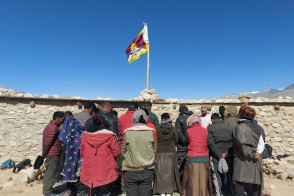
The perceived nomadic challenge to the state seldom results in amicable resolution, under an authoritarian regime like China the results are however not in favour of nomads. China is been cracking down hard on the nomadic Tibetans who are inhabitants of the vast stretches of land in the Tibetan plateau. The nomads have been forcibly relocated to state-constructed settlements which has repercussions. The entire developmental discourse around nomads is based on the state’s predispositions, which have been passed on through different regimes in China. However, the state’s claimed objectives have not fully materialised on ground and imply ulterior motives behind such policies. The following article aims at identifying patterns in Chinese policies to establish the state’s objectives for restricting nomadic mobility. Simultaneously, the policies are inextricably linked with the state’s effort to assimilate Tibetans within a national identity narrative using education policies and (re)presentation in museums. As a result, the nomads who are forcibly relocated face intersectional issues in the semi-urban spaces where they get socio-economically marginalised.
© 2019 ICS All rights reserved.
Powered by Matrix Nodes